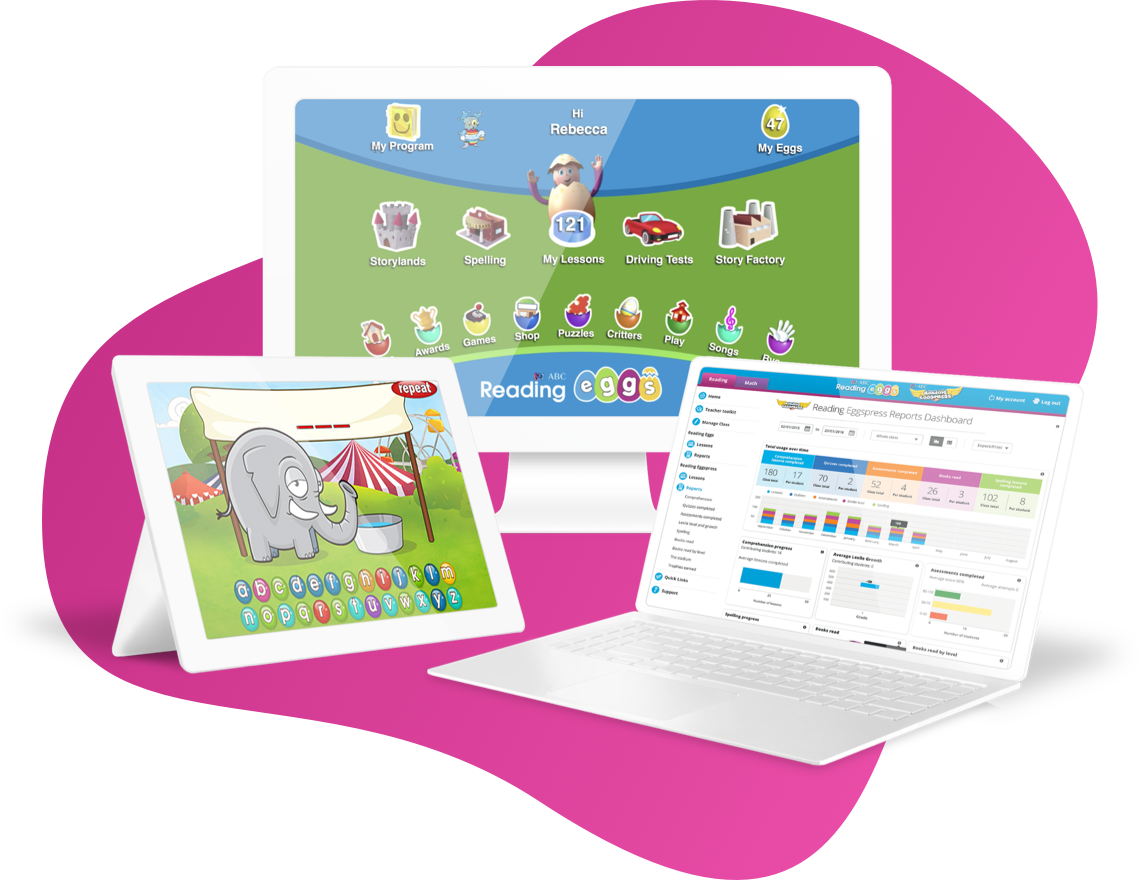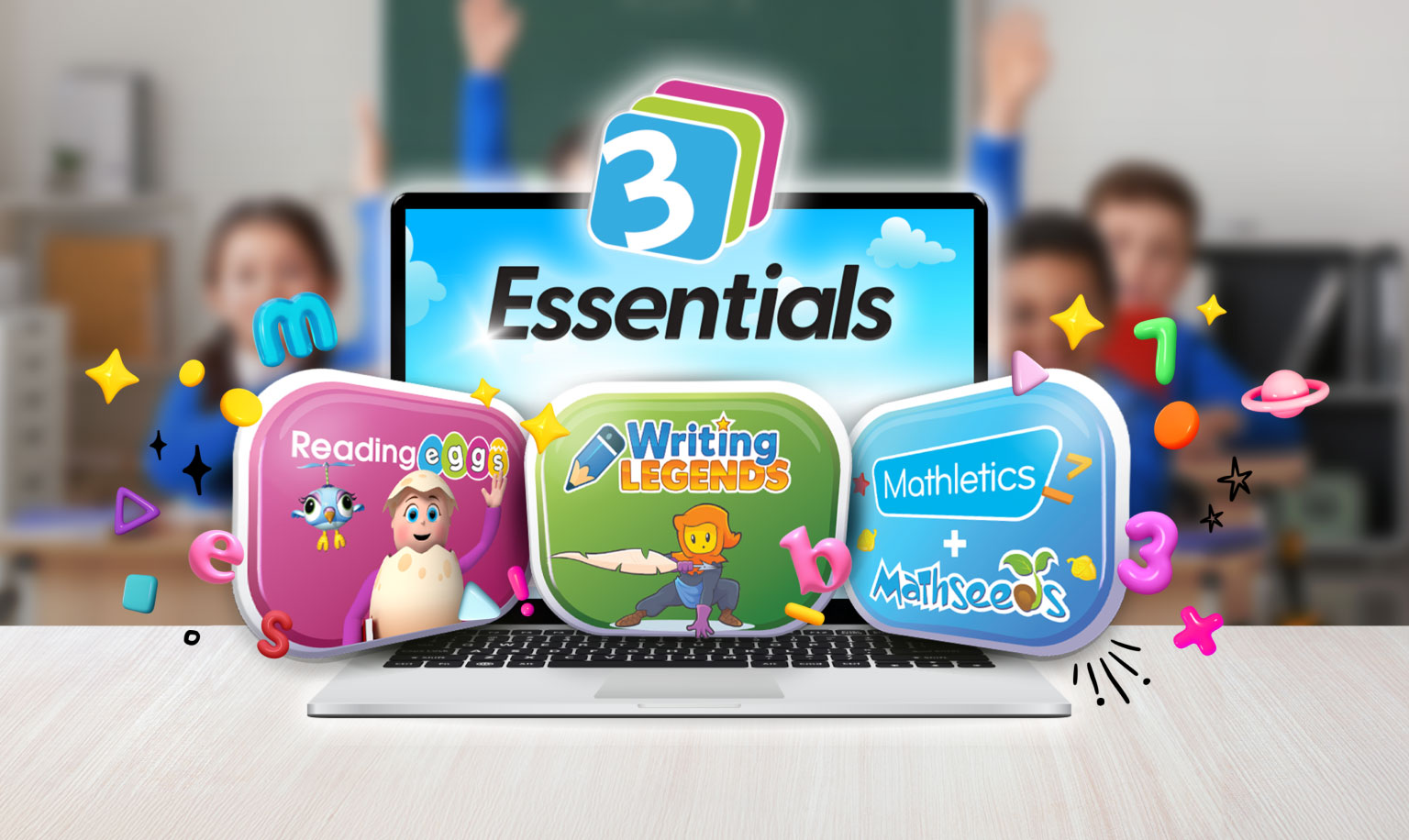
Reading skills are built on five separate components: phonics, phonemic awareness, vocabulary, fluency, and comprehension.
These components work together to create strong, rich, and reliable reading abilities, but they’re often taught separately or in uneven distribution.
Here’s how you comprehensively teach the 5 components of reading skills and make them a regular feature of your classroom.
Phonics
Phonics is the connection of different sounds with different letters, or different groupings of letters. For example, the letter ‘s’ gives an /s/ sound, but adding an ‘h’ gives the different sound of /sh/.
Why is phonics an important component of reading?
Phonics forms the nuts and bolts of the reading process. It allows students to connect arbitrary symbols on a page to verbally expressed language. Even if a child has no understanding of what a word means, they will still be able to phonetically sound it out.
Phonics also develops students’ ability to ‘read by sight’, i.e. register whole words at a glance without sounding out each individual letter. Even within an unfamiliar word, students will be able to quickly sight-read phonic patterns (e.g. ‘however’ as a whole might be new, but ‘how’ and ‘ever’ will be sight words).
Both of the above developments translate to reading fluency. Students are able to read much faster and more efficiently without having to stop and process the letters each time they are confronted by a new piece of vocabulary.
4 ways to teach phonics for reading
There are different approaches to phonics instruction, but these activities will suit any classroom.
- Rhyming games: Any activity that requires students to rhyme words will develop their phonic understanding. This might be writing a poem as a class or mixing and matching pairs of rhymed words.
- Flexiwords: Have students break down a word into its individual phonemes, each of which go onto a decorated piece of card. Students then attach the phonemes (in order) to an elastic band. Stretching out the band will separate the phonemes and helps students to view a slow sounding out of the word. Relaxing it will reveal the word as it appears in regular speech.
- Phonics hopscotch: Draw hopscotch but substitute the numbers with graphemes (the letters representing phonetic sounds). Students have to jump between the different letters as they hear them from a teacher or partner.
- Guess the word: Students write down a set of 5 words, then place them in the middle of the table. The teacher or nominated student then has to pick a word and give clues (e.g. “it ends with -ig”) while the others guess what it is.
- Word mix up: Put individual graphemes on separate cards, and then task students with manipulating them to create as many words as possible.
You can also download phonics teaching resources for free from our literacy hub.
Phonemic Awareness
Phonemic awareness is an understanding of how individual phonemes (consonant or vowel sounds) can be manipulated and arranged to create words. This may sound similar to phonics, but there is a difference. Phonics concerns letter–sound knowledge, whereas phonemic awareness refers to sound–word knowledge. Phonemic awareness is therefore aimed on auditory understanding, as opposed to words on a page.
Why is phonemic awareness an important component of reading?
English is written using an alphabetical system, where every letter corresponds to an individual phoneme. This might sound obvious, but it’s not the case in other languages where characters represent whole syllables (e.g. Japanese) or even whole words (as with certain Chinese characters).
This means that students need an awareness of phonemes themselves before they can make sense of words on a page. For example, to read the word ‘cat’ aloud, students have to know what the phonemes /c/, /a/, /t/ sound like when put together. And it’s not easy either — phonemes have to overlap and flow together to form fluent speech.
For this reason, studies have identified phonemic awareness as the best early indicator of a student’s reading potential. It sets the stage for phonics, and virtually every other component of literacy.
5 ways to develop phonemic awareness for reading
- Phoneme isolation: Students identify individual phonemes in words, e.g. “What is the first sound in ‘boat’?” (/b/)
- Phoneme identity: Students identify the common sound in different words, e.g. “Tell me the sound that is the same in ‘bike’, ‘boy’, and ‘bell’.” (/b/)
- Phoneme categories: students identify the word with the odd sound in a sequence, e.g. “Which word does not belong? Bus, bun, rug.” (rug)
- Phoneme blending: Students listen to a sequence of separately spoken sounds and combine them to form a recognizable word, e.g. “What word is /s/ /k/ /u/ /l/?” (school)
Phoneme deletion: Students find the word that remains when a specified phoneme is removed, e.g. “What word do we get when we remove /s/ from ‘smile’?” (mile)
Vocabulary
Vocabulary is the range of words a student is able to understand and use in context. More of a toolbox than a skill, students’ vocabularies grow as they read and are introduced to new words.
Why is vocabulary an important component of reading?
You can only take meaning from words you understand. Students with broader vocabularies are more confident when reading challenging or unfamiliar material. When they encounter unknown words, they can figure it out based on context clues or resemblance to familiar pieces of vocabulary.
You can grow students’ vocabularies with regular reading in and out of the classroom.
5 ways to develop a stronger vocabulary for reading
- Word of the day: Create a daily roster for students to share a newly discovered or unusual word with the class. They could explain the word by providing an original definition, acting it out, or compiling a list of synonyms.
- Creative writing: Compile all the ‘words of the day’ gathered over the week and then task students with writing a story that uses as many new words as possible. This ensures they learn how to use new vocabulary in context.
- Class glossary: When reading a text or studying a topic, compile a list of unfamiliar words, and assign them to students. Each student must create a glossary page with a definition, pronunciation guide, sentence example, mnemonic (memory aid), and an image representing the word.
- Opposites attract: Assign each student a card with a new word and its definition. They then have to find and pair up with a classmate who has a word with the opposite meaning.
- Vocab bookmarks: Have students design and create a bookmark with a space to write down any new words they discover while they read. Laminate them so students can reuse them with a dry-erase marker.
Fluency
Fluency is the ability to read with speed, understanding, and accuracy. Yet it’s more than information extraction — it’s the skill that allows us to ‘follow’ a text, picture its descriptions, and hear the auditory expression of words in our heads even when reading silently.
Why is fluency an important component of reading?
Fluency is what lets students feel the ‘flow’ of a text. Struggling readers, for example, read aloud in a jerky, clipped fashion as if a new sentence begins with every word. Others might be oblivious to the shifting tone and pace of a text, reading it in a steady monotone with no expression. In both cases, the process of reading becomes painful and awkward — even if students can successfully decode individual words.
Fluency and comprehension are closely tied. A student cannot fully understand the meaning and ideas behind a text without the ability to read it fluently.
5 ways to develop reading fluency
- Teacher modeling: regularly reading aloud to students serves as a model for reading fluency. Be expressive and vary your pace so that students get a sense of the flow. If possible, have students read along with their own copy of the text, so they can link it to the words they hear aloud.
- Phrase identification: Take a single sentence and read it aloud while students refer to the written version. Ask them to identify distinct phrases with an underline by listening carefully to the pauses. Can they separate the sentence into groups of words that run together? Model it first to give students a clear idea.
- Choral reading: Read a short text aloud to your students, and then have them read it aloud in unison. Matching the flow and pace of the group develops fluency.
- Paired reading: Having children read aloud to one another encourages them to develop the expression and flow needed for fluency. Pair students of different ability levels for more powerful learning, but make sure the disparity is not too great.
- Use audiobooks: Audiobooks paired with text allow students to link the words on the page with fluent and expressive reading. You can find engaging audio titles in the Reading Eggs and Reading Eggspress Library, which contains over 2500 student eBooks.
Comprehension
Comprehension is a student’s understanding of the information being imparted by a text, such as:
- who
- what
- when
- where
- ideas
- meanings.
Why is comprehension an important component of reading?
Comprehension allows students to draw meaning and information from a text, and it also transforms reading from a purely functional activity into one that inspires thought and feeling.
5 ways to develop comprehension skills for reading
- Drawing: Ask your students to draw or paint a scene from a written text. This encourages them to imagine the concrete details being represented by the words themselves.
- Questioning: Follow up reading time with open-ended questions that prompt students to think deeply about the text. For example, if reading a narrative, you might ask students how a character changed over the course of a story, or how a central problem influenced the action.
- Encourage reflection: Ask students for their opinions on the text in order to encourage deeper reflective thinking about the ideas. For example, you might ask what emotions were evoked by a setting, or whether a character’s actions were right or wrong.
- Make connections: Encourage students to make connections to their own lives and other texts that they have read. Weave this into your discussion or questioning after reading in order to link comprehension with real-world concepts your students can relate to.
- Make reading a habit: The more students read, the more confident and astute their comprehension skills will become.
Habit is key for all reading skills!
Remember: the best thing you can do to help children become confident, fluent readers is to put them in front of as much written material as possible. Make it a regular and celebrated part of your classroom activity, and you’ll set them up to become readers for life.












